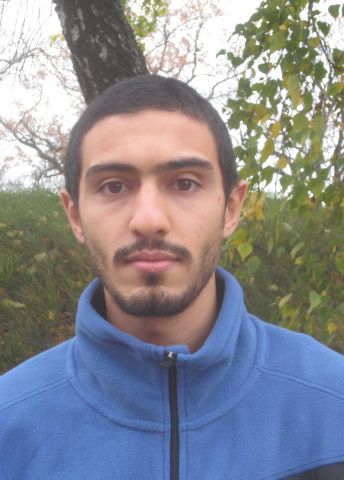
Program for mathematics 2020
Grant to a post-doctoral position abroad
Bashar Saleh
Stockholm University
Postdoc at
University of Barcelona, Spain
Grant to a post-doctoral position abroad
Bashar Saleh
Stockholm University
Postdoc at
University of Barcelona, Spain
Algebra brings order to topological spaces
Bashar Saleh will receive his doctoral degree in mathematics from Stockholm University in 2020. Thanks to a grant from Knut and Alice Wallenberg Foundation, he will hold a postdoctoral position with Professor Joana Cirici at Universitat de Barcelona, Spain.
Bashar Saleh’s project is about classifying geometric spaces, which are important objects of study in the branch of mathematics called topology. For a topologist, a bagel and a coffee cup with a handle are equivalent because each has a single hole, and each can be transformed into the other without being torn or cut – but they are not equivalent to a sphere.
Last century, one of the biggest questions in mathematics concerned spheres. In 1904, Henri Poincaré conjectured that a three-dimensional sphere is the only closed three-dimensional space on which all closed curves can be deformed to a point. Almost a hundred years passed before a Russian, Grigori Perelman, succeeded in proving this fundamental topological conjecture. He was awarded the Millennium Prize, worth a million dollars, which had been promised to anyone who solved one of the world’s seven most difficult mathematical problems. However, Perelman was not interested in money or in glory, saying that the solution of Poincaré’s conjecture built upon the work of his predecessors.
The laborious attempts throughout the 20th century accelerated development in algebraic topology, a subject that combines topological spaces with algebraic objects. In this way, algebraic objects and methods can be helpful in solving classification problems when topology becomes too complicated. And, conversely, some algebraic objects can be dealt with more easily using topological tools.
Bashar Saleh will investigate a special family of functions, known as fibrations, which can be classified using particular kind of topological spaces (classifying spaces of homotopy automorphisms). These spaces, in turn, are difficult to describe geometrically, so the focus of the project will be to create models of these topological spaces using algebraic techniques.
Photo: Stockholms universitet